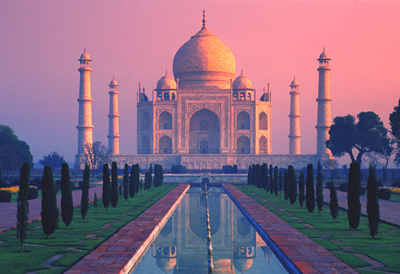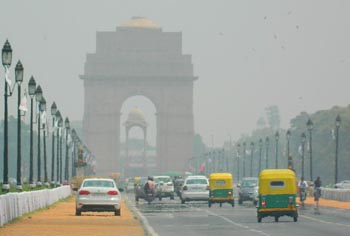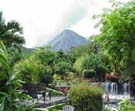INDIA
Featuring the GOLDEN TRIANGLE
Delhi, Agra, Bharatpur, Samode and Jaipur
India’s Golden Triangle comprises the three most visited cities in the country, Delhi, Agra and Jaipur, which are all connected and have been dubbed “golden” for the extraordinary wealth of cultural and historical splendor on offer in each of the three cities.
Delhi, the present capital of India that has a great history and culture. Over thousands of years, Delhi has been a witness to the rule of various dynasties. This resulted into the evolution of a culture, so very unique to Delhi.
Agra: Agra is synonymous with the epitome of love and romance, the Taj Mahal. The Taj Mahal represents the zenith of the Mughal architecture.
Jaipur: Known as ‘the pink city’, Jaipur is the capital of the Rajasthan state. It is one of the most beautiful cities in India and is home to numerous wonderful monuments.
The Golden Triangle is a classic introduction to India: if you’ve never been to the subcontinent before, start here.
Tour Includes:
- Airfare to India
- Inter-India Flights
- Other tour-related transportation in India
- Roundtrip airport/hotel transfers, including luggage handling
- Accommodations in First Class hotels in Delhi, Agra, Bharatpu, Samode and Jaipur
- Hotel service charges and taxes
- Daily breakfast
- Other meals as per itinerary
- All site entrance fees
- Pre-paid Gratuities
- Locally guided
Special Added Features:
- Welcome Dinner
- Sunset visit of the Taj Mahal
- Visit to heritage city of Fatehpur Sikri,
- Visit by Rickshaw to the bird sanctuary in Bharatpur
- Excursion via Elephant to the Amber Fort in Jaipur.
- Farewell Dinner
Volunteer Projects Include
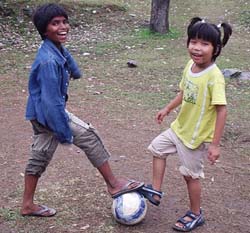 In Delhi a visit to the Salaam Baalak Trust, to asset children that live and work on the streets. Their mission is to provide a sensitive and caring environment for these children and they believe that volunteers are a vital part of that mission. They welcome volunteers from all backgrounds and skill-sets to come to their organization and spend time with the children and staff there.
In Delhi a visit to the Salaam Baalak Trust, to asset children that live and work on the streets. Their mission is to provide a sensitive and caring environment for these children and they believe that volunteers are a vital part of that mission. They welcome volunteers from all backgrounds and skill-sets to come to their organization and spend time with the children and staff there.
- Barara is between Agra and heritage city of Fatehpur Sikri, and has been declared a “Tourist Village”. It has been host to IFYE (International Farm Youth Exchange) delegates from USA since 1964 and ahs created a peaceful coexistence with perfect harmony between all communities that has no communal or caste based violence occurred.
- At Samode, the “Dream Project” pairs you with a local student and together discusses the student’s dreams for this art project. We have found it to be a valuable opportunity in teaching children the value of dreaming: how important it is to have dreams, to wish for things, to have goals in life…..and how visualizing ones dreams in this way and keeping them near you while you sleep helps your dreams come true.
Itinerary
Day 1: To Delhi
Depart for Delhi on your overnight flight
Arrive at Delhi’s International Airport. Welcome to India! You are met by our representative in the arrival area of the airport after you clear all immigration and customs formalities. Depart for your hotel where you will check in for your stay. Delhi stands as the capital of Modern India. Here you can see the mingling of the Old and New India, the ancient and the modern. Delhi is made up of seven ancient cities, spanning the period from the 11th to 20th centuries. Delhi has seen the rise and fall of many emperors, which has left behind a plethora of monuments that commemorate the grandeur and glory of bygone ages. Very few cities in the world can express such a profusion of architectural styles. Welcome dinner and Overnight Delhi
Day 3: In Delhi – 1st Volunteer Program (B)
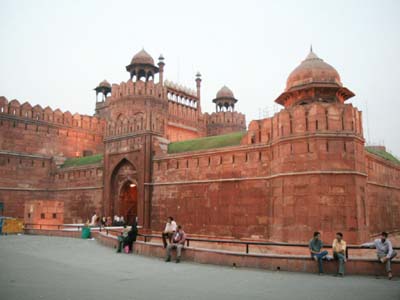
After breakfast proceed for city tour of Old Delhi. Old Delhi was an ancient walled city. Mughal Emperor Shah Jehan in 1650 switched the Mughal capital from Agra to Delhi. Shah Jehan possessing an exquisite talent, especially in architecture, created the seventh city and in the process brought about Delhi’s glorious renaissance. Start the day with a cycle rickshaw ride through Old Delhi. Here we will see Red Fort [from outside] the most opulent Fort and Palace of the Mughal Empire. The fort is Shah Jehan’s symbol of power and elegance, built behind red sandstone walls. Its main gate (Lahore Gate) faces Chandni Chowk; the perpetually congested avenue heading west from the Red Fort is filled with twisting lanes, small streets and crowded bazaars. Also visit Raj Ghat, the memorial site of the Mahatma Gandhi; Jama Masjid, the largest mosque in India; and Chandni Chowk, the bustling and colorful market of the old city. Chandni Chowk was the commercial centre of Delhi in the old time and we will see it come alive in the morning as the trading day starts. After lunch on our own, we depart to the Salaam Baalak Trust, to assist children that live and work on the streets. Their mission is to provide a sensitive and caring environment for these children and they believe that volunteers are a vital part of that mission. They welcome volunteers from all backgrounds and skill-sets to come to their organization and spend time with the children and staff there. There are a range of volunteer activities available. Specifically, they need volunteers in the areas of education, mental health and healthcare, life skills development, documentation and communication, creative expression (includes sports and talent development), and computer skills. Return to our hotel for our overnight stay in Delhi and dinner on your own at one of the wonderful local restaurants.
Day 4: To Agra (B/D)
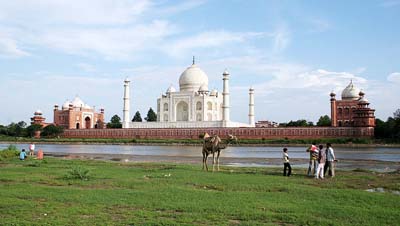
After breakfast, proceed for the New Delhi tour. New Delhi, designed and built by the British in the 1920’s – it’s a city of wide boulevards impressive Government buildings, green parks and gardens. In 1911 King George V announced the transfer of the capital from Calcutta to Delhi. The King’s architects, Lutyens and Baker, set in motion the design and construction of Delhi’s eight city – New Delhi. Lutyens designed an “Imperial City” having palatial-sized buildings set amid broad tree-lined avenues punctuated by Mughal style gardens, complete with fountains and shallow pools. It took 20 years to complete this immense undertaking only to have the British pack up and relinquish the subcontinent in 1947. We will visit two monuments from Delhi’s past – Humayun’s Tomb and Qutub Minar. Your drive takes you along the ceremonial avenue, Rajpath, past the imposing India Gate and Parliament House. After the tour, we drive to Agra. The. On arrival in Agra, check-in to our hotel. In the evening at sunset visit The Taj Mahal: Visit that magnificent monument to love – Taj Mahal, built by an emperor in memory of his beloved queen. Construction of the Taj Mahal began in 1631, and is believed to have taken 22 years to complete, with over 20,000 craftsmen working around the clock. The design and construction is said to be that of the legendary architect, Ustad Ahamad Lahori. Legend has it that once construction was completed, Shah Jehan had Lahori’s hands cut off, and blinded, so he would never be able to duplicate the structure. What makes the Taj Mahal unique is its perfect proportions, distinct femininity, medium of construction and ornamentation. Dinner at our hotel. Overnight in Agra.
Day 5: To Bharatpur and 2nd Volunteer Program (B/D)
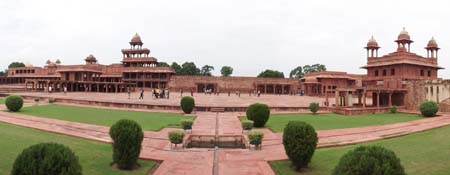
After breakfast, we depart for the Barara Tourist village, our next Volunteer program. Barara is between Agra and heritage city of Fatehpur Sikri, and has been declared a “Tourist Village”. It has been host to IFYE (International Farm Youth Exchange) delegates from USA since 1964 and ahs created a peaceful coexistence with perfect harmony between all communities that has no communal or caste based violence occurred. After the camp visit we continue to Bharatpur and en-route visiting Fatehpur Sikri. Fatehpur Sikri – The imperial city of the Mughal dynasty between 1571 and 1584, Fatehpur Sikri was built by Mughal Emperor Akbar. The architectural grandeur of this deserted city cannot be described in words and one can only experience the aura of its magnificent edifices by seeing them. Fatehpur Sikri is the most popular day excursion from Agra, the city of Taj and capital of invincible Mughals for a long time. Arrive into Bharatpur & check into our hotel. The later this afternoon proceed on to visit the bird sanctuary by rickshaws. Dinner and Overnight at our hotel in Bharatpur.
Day 6: To Jaipur (B/L/D)
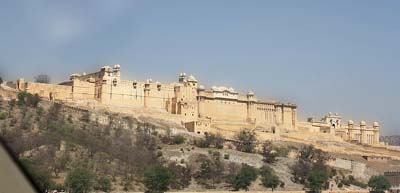
After breakfast we drive to Jaipur. Lunch along the way. Upon arrival you check into our hotel and have the rest evening of the evening free to relax in the hotel. Known as the “Pink City”, Jaipur is the capital of the colorful state of Rajasthan. It has the distinction of being a well planned and laid out city. As you drive through the old part of town, you will witness a life most unlike others. Witness how the city blooms during the day in a kaleidoscope of color and sound Dinner and Overnight at our hotel in Jaipur.
Day 7: In Jaipur (B)
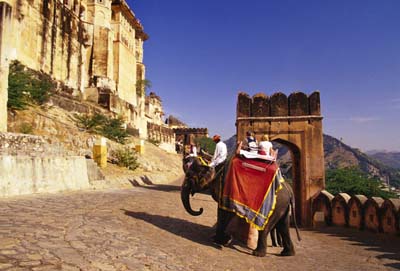
We depart our hotel for a half day excursion to inspiring Amber Fort. Amber Fort is a marvelous example of Rajput architecture with its terraces and ramparts reflected in the Maota Lake below. We travel up to the fort in jeeps. The interior of the fort has various royal halls decorated with intricate ivory, mirror and glass work complemented by exquisite wall paintings. As we move between the rooms of this magnificent structure, we can feel the history and visualize the pomp and grandeur of a kingdom never conquered.
IMPORTANT: Elephant ride at Amber Fort cannot be guaranteed in advance. This is due to the fact that the number of elephants and the trips each elephant can take is very limited. All guests have to reach the Amber Fort in time and stand in line to wait their turn to climb the elephant, these lines could sometimes be very long and some guests have had to be turned back.
Lunch on our own before we venture into the city, this time on a city tour. We’ll visit the City Palace Museum where we can see an imposing blend of traditional Rajasthani and Mughal Art. The museum is resplendent with its collection of robes of royal princes, carpets, an armory of old weapons, miniature paintings portraying court scenes, battle scenes and processions, Also visit the awe inspiring Jantar Mantar (an accurate observatory built in 1726 AD). Included will a photo visit at the Hawa Mahal (Palace of Winds) – a five storied wonder with a spectacular pyramidal facade and overhanging windows with latticed screens, domes and spires. Evening free for independent activities for shopping and dinner on our own. Overnight at our hotel in Jaipur.

Day 8: In Jaipur: To Samode – 3rd Volunteer Program (B/D)
We leave Jaipur after breakfast for the drive to Samode (about 1 ½ hours). At Samode, the “Dream Project” pairs you with a local student and together discusses the student’s dreams for this art project. We have found it to be a valuable opportunity in teaching children the value of dreaming: how important it is to have dreams, to wish for things, to have goals in life…..and how visualizing ones dreams in this way and keeping them near you while you sleep helps your dreams come true. Return to Jaipur for some relaxing before our farewell to India dinner. Overnight in Jaipur.
Day 19 To Delhi (B)
An Early breakfast as we head back to Delhi and the International Airport to board our flight home.
NOTE: This is a sample itinerary for group tour leaders.
It is a suggestion to assist teachers, religious leaders, organization heads, authors, speakers and other leaders who are planning a travel program for their group.
Your organization could go on a tour like this.
To get started CLICK HERE
